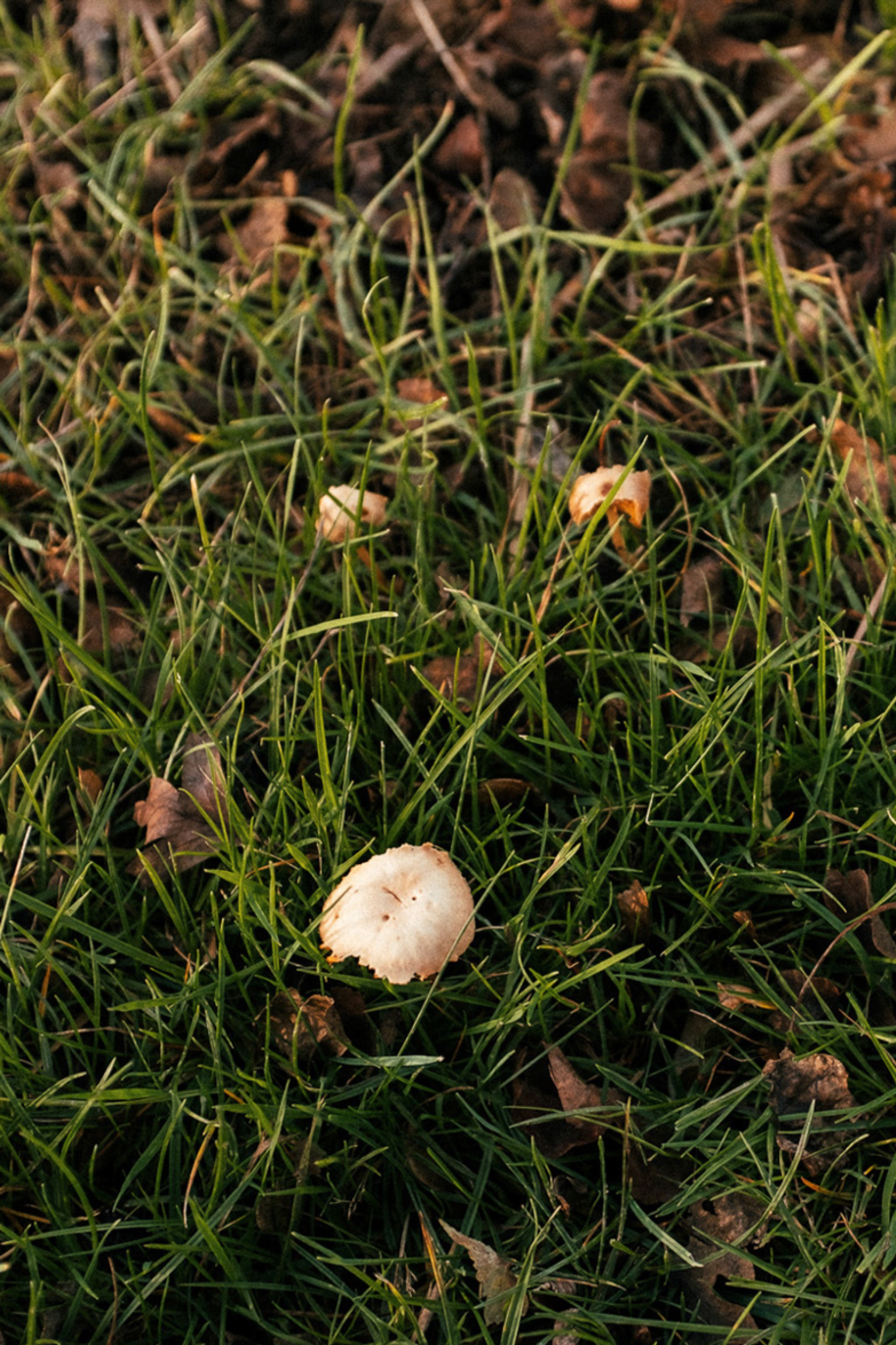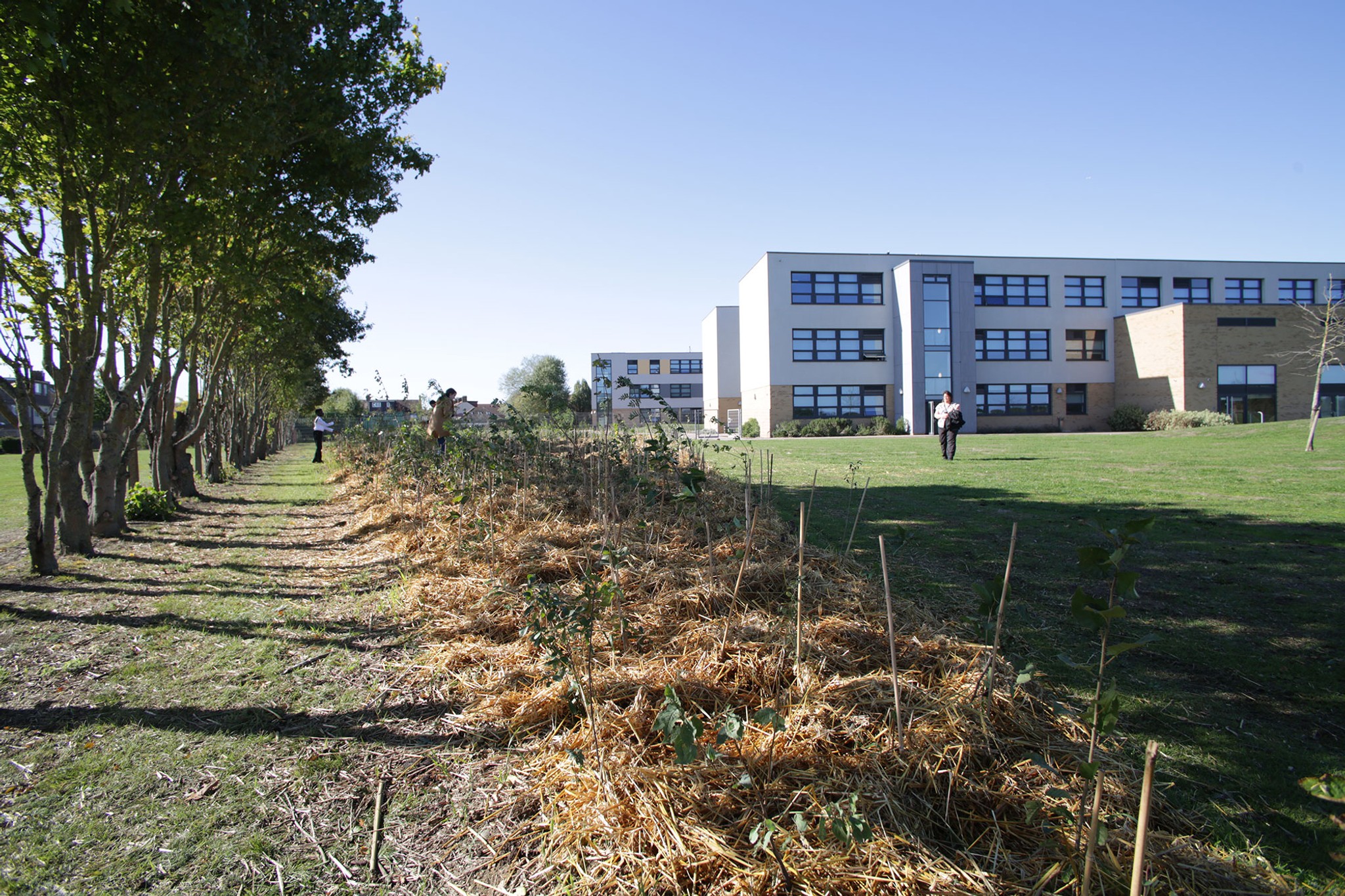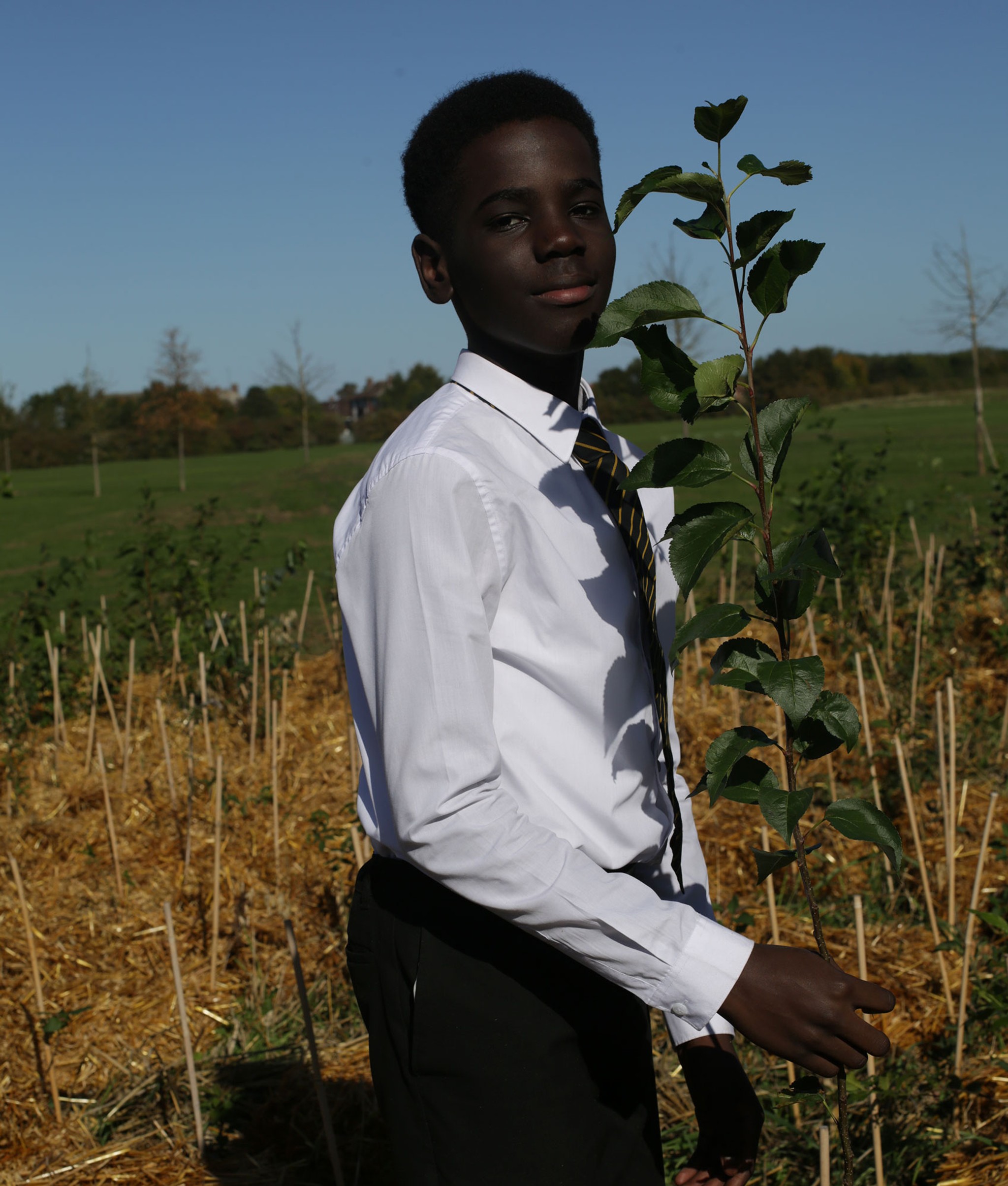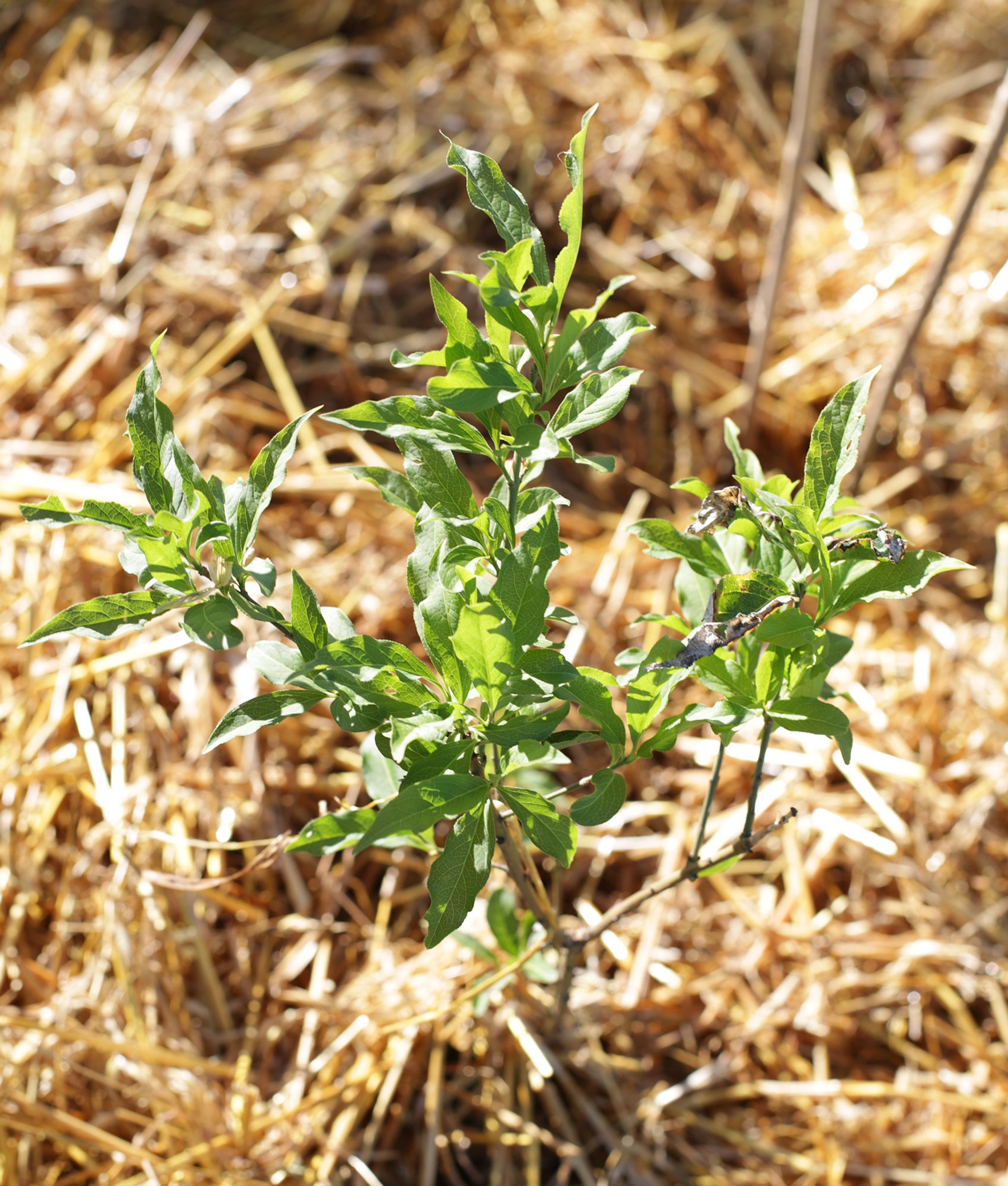Eastbrook Forest
Tackling air pollution in industrialized East London.


0
Trees
0
Square Meters
0
Native Species
0
Youth Impacted
Self sustaining pocket forest
Planted in 2022, this forest is cherished by both students and teachers at Eastbrook School, now woven into the curriculum through a program aimed at enriching students’ experiences beyond the classrooms. The initiative includes ‘50 things pupils should do before leaving school’, with spending time in the forest being a key activity. One of the main goals of the project was to connect children with Nature, so it has been wonderful to see this vision come to life. The forest is also strategically placed between the school building and the playing fields, acting as an effective buffer that shields studying students from the noise and activity of their peers at play.
Now denser and more mature, with the wild cherry (Prunus avium) and birch (Betula pendula) trees growing particularly well, the forest provides ample shelter for local wildlife. There have been reports of songbirds flying in and out of the depths of the forest, and an abundance of butterflies were observed during the summer of 2024. We expect the forest to continue to thrive and build biodiversity as it further develops.
Forest Maker
James Godfrey-Faussett
Forest Partner



Ecosystem Restored
Final report: 31.10.2024
After approximately three years our SUGi Pocket Forests become self-sustaining. They no longer require human maintenance or watering, and can be handed over to Nature for biodiversity and complexity to naturally develop.
0%
Survival Rate
0
People living within 300 meters
0
kg of potential CO2 sequestration
Biodiversity
Biodiversity is all the different kinds of life you'll find in one area—the variety of animals, plants, fungi, and even microorganisms like bacteria that make up our natural world. Each of these species and organisms work together in ecosystems, like an intricate web, to maintain balance and support life.
0
Potential number of mammals
0
Potential number of birds
0
Potential number of amphibians
“Planting trees on school grounds has many benefits such as spreading environmental awareness to students, teachers and the wider community. This will help us all to understand the importance of a wildlife sanctuary and why it should be protected.”
Terri Suter, Year 8 Student, Eastbrook School
Forest Report: 2024
0 Years
Forest Age
0%
Survival Rate
0m
Average of Tallest 3 Trees
Biodiversity Notes:
Forest Report: 2023
0 Months
Forest Age
0%
Survival Rate
0m
Average of Tallest 3 Trees
Eastbrook forest stands as a testament to a successful and well-developed planting area. The overall health of the planting is showing robust growth and vitality.
A smaller band of planting is observed along an existing linear tree planting. However, it's important to highlight that this specific section is comparatively smaller than the overall and average planting size in the area. This is probably caused by the shadow from the existing tree line, affecting the growth dynamics of the vegetation in this particular zone.
Notably, the use of straw mulch is still present throughout the area. Oaks have been observed as the smallest species in the overall site.
Eastbrook forest has done well in growing healthy and thriving plants.
Biodiversity Notes:
Forest Report: 2022
0 Months
Forest Age
0%
Survival Rate
0m
Average of Tallest 3 Trees
Planted just before the summer, this forest is establishing wonderfully. In particular, the crack willow (Salix fragilis), which is currently the tallest species in the forest, along with the dogwood (Cornus sanguinea) and wild cherry (Prunus avium), are doing well. Overall, all species seem to be growing happily.
Several species have resprouted after initial stress and die back - this is always a positive sign as the new growth put out by the saplings is highly resilient. This forest is providing real joy within the school community and is being well looked after by the students.
Biodiversity Notes:
“Allowing students to be part of a project that shows the impact of planting trees has on the school community and the diversity of life that emerges as it grows into a thriving ecosystem is truly exciting for us. At this pivotal time of climate change, Eastbrook School can be a model school to lead the way to increase the number of trees in our local community.”
Miss Arnill and Miss Hull, Teachers, Eastbrook School
Planting: March 2022


















































